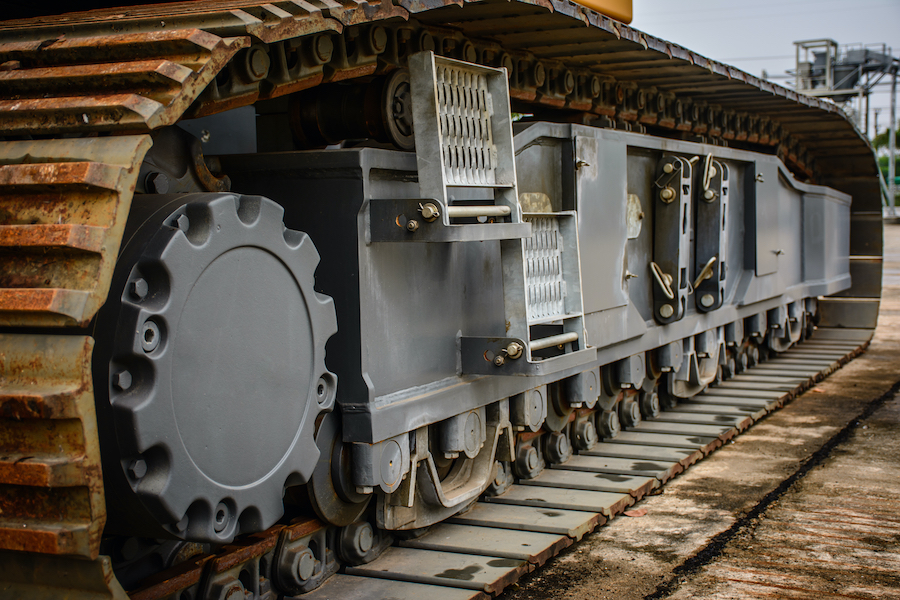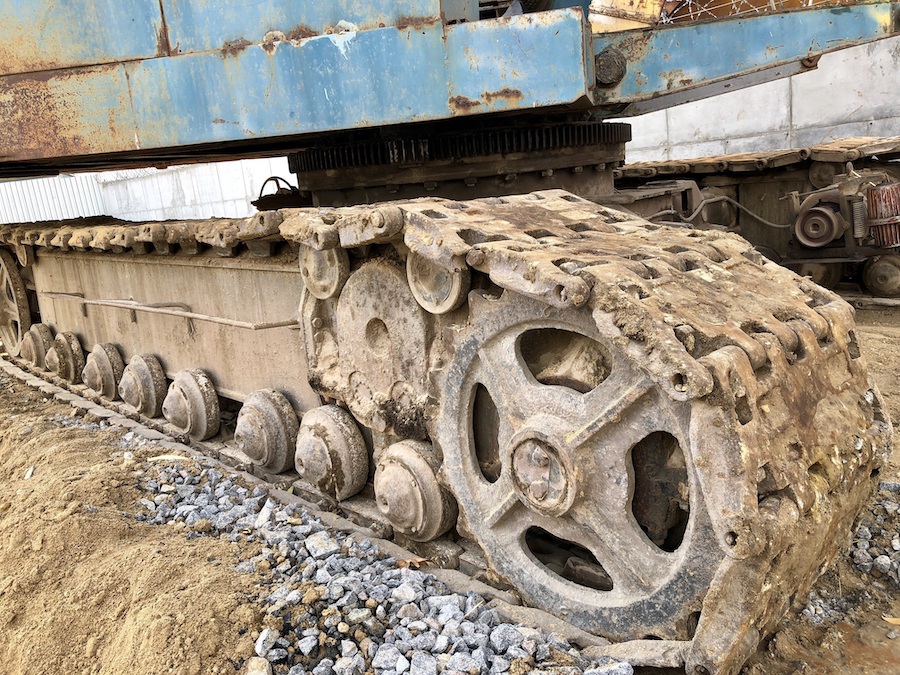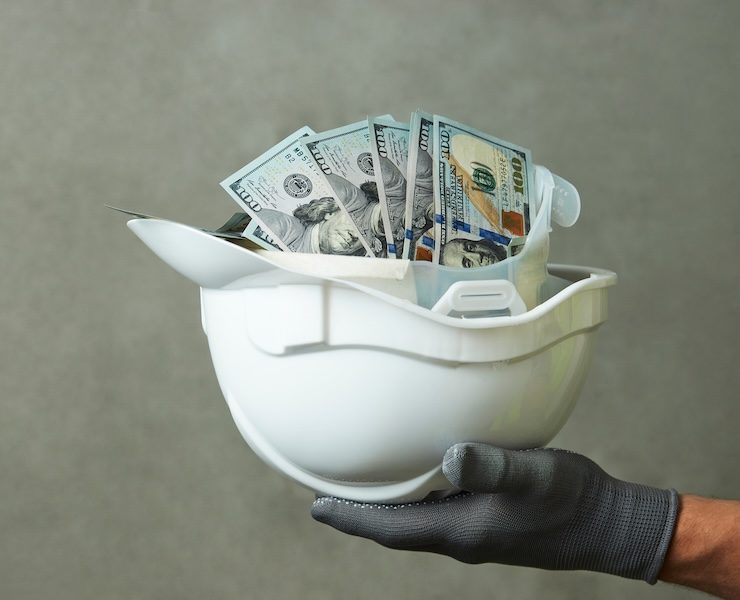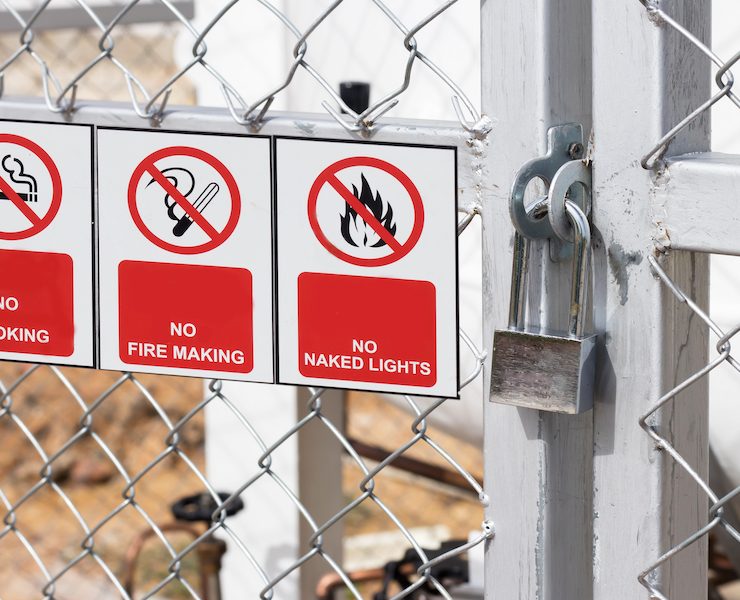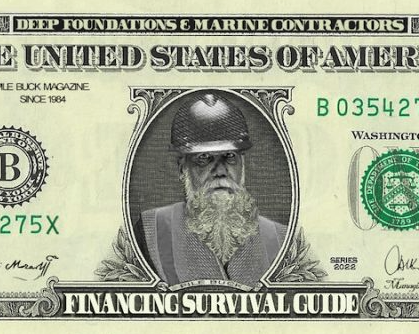Inspection and Preventive Maintenance for Cranes
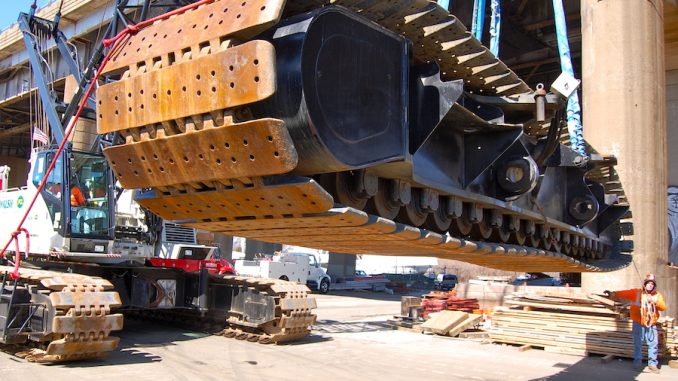
It goes without saying that crane inspection and maintenance are critical to safety on the job site. Property owners and contractors are obligated to follow OSHA guidelines when it comes to the safety of workers and other people on the project. These regulations are designed with rules that are practical and reasonable to minimize both safety risks and health risks.
Like other heavy equipment used on a job site, cranes need regular inspection and maintenance to ensure they are safe to use. Manufacturers provide maintenance instructions, and the OSHA regulations also need to be followed.
Purpose of Crane Inspection and Maintenance
These inspection and maintenance steps are essential to identifying signs of damage or corrosion in the early stages. Proactive care of the equipment minimizes the possibility of an accident, which helps to avoid injury and expensive material damage on the job site.
Not only are the potential risks identified through inspection, but it is also an opportunity for safety improvements that need to be addressed. Preventive maintenance is a key factor for safety, and each maintenance schedule needs to be custom-tailored based on the type of equipment, use, storage, and more.
Basic routine maintenance can be as simple as lubricating and adjusting to ensure the equipment is meeting the manufacturer’s requirements. These steps improve overall function of the moving parts, so everything is running safely.
At the same time, compliance inspections are needed to ensure regulatory requirements are met. As the equipment owner or operator, it is important to understand these compliance details. Regular internal inspections should be performed so the equipment is always current with these standards.
Pre-Check for Crane Inspection
Specific processes for crane inspection vary depending on the type of crane. Before the equipment is tested and inspected, it is important to look at the paperwork:
- Records: Check the inspection and maintenance records to ensure that everything is up-to-date for the crane that will be used. This logbook should be kept current at all times and include maintenance, repairs, and other details specific to the equipment. A review of the logbook should communicate an accurate condition of the crane.
- Maintenance Requirements: In addition to current records, it is also important to look at maintenance recommendations and requirements to ensure the schedule is followed.
- Operator Qualifications: Not only does the equipment need to be in good condition, but the operator must be trained on all aspects of crane use, including the functional limitations of the equipment.
- Use of Equipment: How will the crane be used on the job site? Evaluating equipment use is helpful to make sure the right crane is being used for the work that needs to be completed.
The pre-check begins before looking at the equipment. The inspector will request the above information and have conversations with the ground crew, supervisors, and operator(s) about load weight, rigging, load charts, capacities, and other determinations that affect the safety of the crane.
Additionally, the crane operator will likely be asked to operate certain functions of the crane. For example, the boom/load line needs to be raised and lowered, and the running line or rope should be inspected from the cab position. Brake action needs to be observed to ensure the ability of the crane to stop.

Crane Setup Checklist
The initial review of the crane should focus on multiple factors that will affect the performance and safety of the crane function:
- Are there any potential obstructions to operation or movement? Look for things such as proximity of power lines, electrical hazards, and other environmental factors that could hinder the movement of the crane.
- Stability of the crane, based on ground quality and leveling for optimal rotation and operation. This stability is based on the angle of the boom, the load weight, and the radius to the load gravity.
- Structural integrity should always be evaluated, including the attachments, wire ropes, main frame, crawler, boom sections, and track and outrigger supports.
- The condition of the crane loading needs to be considered to avoid load moment that could overturn the crane.
- Outriggers should be extended to match the recommendations provided by the manufacturer.
Frequent Inspection Guidelines (Daily/Weekly)
Even if the crane isn’t operated regularly, routine testing and inspection are important to ensure the equipment is ready to be used when needed. Depending on the use of the equipment, it is smart to complete an inspection daily or weekly. The frequency of these inspections is based on level of service, activity, and the environment where the equipment is operated.
The best way to identify wear and tear in the early stages (and thus minimize the risk of injury or damage) is to maintain a consistent schedule for inspections. Cranes can cause serious injury and even death when something goes wrong. Overlooking these inspection schedules could result in liability if something happens on the work site.
Often, a daily inspection is completed by an operator at the start of each shift. The operator walks around the crane to look for visual signs of problems or defects.
- Inspect crane motion, controls, and functions
- Safety and emergency switches, as well as any other push buttons that might be sticky or not operating smoothly
- Wheel tread wear, proper inflation, as well as signs of breaks, tears, or cuts
- Fluid levels and possible leaks, including hydraulic and air
- Wire ropes and attachments
- Filters
- Guarding for moving parts
- All components used for swinging, lifting, or lowering
- Swivel rotation
- Signage, such as high-voltage warnings
- Boom and jib inspection to look for straightness, as well as signs of physical damage. Warning signs include bending, kinks, cracked paint, or corrosion under attachments.
- Moving part lubrication, including oil, fuel, hydraulic oil, and coolant.
- A test lift to check the accuracy of rated capacity indicator (RCI) and/or load moment indicator (LMI)
- All structural components, including electrical wires, locking devices, shafts, pins, fasteners, gears, and more
- Check all brakes, including both the bridge and trolley motor brakes
- All operating mechanisms, including brakes, drums, limit switches, hydraulic cylinders, lights, sheaves, hooks, instruments, and hook rollers brackets.
- Every crane should be equipped with a fully-charged fire extinguisher
- The engine needs to be running to check warning lights and gauges, and to ensure that all controls are working properly
- Look for loose items on the crane that could potentially fall while the crane is in operation
- Operator view through the window (check for cracks or broken glass)
- Any other recommended inspection details included in the instructions from the manufacturer
Not only does the inspection need to be completed, but a written summary should be kept on file.
Major Inspection for Cranes
Major inspection is also required at certain intervals, with the goal of identifying any parts that are in need of repair or replacement. These major inspections should occur every 1 – 12 months, depending on the equipment and manufacturer recommendations.
Major inspections should include all items listed above for daily inspections, but a few more points also need to be inspected. Keep in mind that this list is not inclusive since inspection points vary for each piece of equipment:
- Visual inspection for structural damage, including all structural attachments, outrigger assemblies, and the mainframe
- Look for signs of cracks in the welded connections
- Inspection of worn or cracked drums and sheaves
- Proper electrical connections for all power plants
- Signs of chain stretch or wear on drive sprockets
- Security of counterweight
- Inspection of all parts, regardless of size: hook roller brackets, welds, locking devices, bearings, pins, shafts, gears, removable outrigger attachment, and lugs
- Check the main chords and lacings for signs of paint cracking or flaking
- Check hydraulic booms for side sway, bending, or droop
- Correct response of brakes, steering, and locking devices
- Inspection of all hydraulic and pneumatic fittings, hoses, and tubing, including possible leaks in the flexible hoses, deformations, blistering, abrasive wear, or leaking at connection points
- Test proper calibration on all indicators, including load and boom angle indicators
- Professional inspection of the load/stress bearing structure should be completed at least annually, with provided reports for the crane file
In the inspection, if it is discovered that a crane is in need of maintenance or repair, then it is important to understand the risks to safety and health if the crane is kept in service. The use of the equipment should be put on hold until the proper cleaning or maintenance is completed.
Proper Record Keeping for Maintenance and Inspection
Whenever the crane is inspected or maintenance/repair work is completed on the crane, thorough records need to be kept. Documenting these significant events makes it easy to see the maintenance history. Additionally, this information might be important to show the proactive maintenance approach to ensuring safety, in case liability is in question.
When documenting the safety and maintenance of the crane, including applicable information, such as:
- Maintenance or inspection date
- Name of mechanic
- Parts replaced
- Work completed – including checks, replacements, inspections, etc.
- Signs of damage or irregularities
- Signature of work completed
Inspection reports should also be detailed, and include the following information:
- Components and parts that were inspected
- Method of inspection
- Signs of damage, including corrosion, wear, or cracking
- Criteria used for the inspection
- Details to document the findings, such as measurements or photographs
- Recommendations for necessary maintenance or repair work
Understanding the Crane’s Load Rating Chart
One essential aspect of crane safety is ensuring that the load ratings are known and respected. A durable rating chart should be attached to the crane in a location where the operator can view the information while sitting at the controls.
This rating chart provides restrictions and guidelines about the capacity of the equipment. Charts should include all loading ratings as well as operating radii. Other information might include a list of no-load work areas, weights of auxiliary equipment, work area chart listing capacities (over front, over rear, over side), as well as a description of hoistline reeving requirements.
Designing a Custom Crane Inspection and Maintenance Schedule
Every crane should have a custom inspection and maintenance plan, based on the use of the machine and the manufacturer’s recommendations. Not only does this plan improve safety for employees and other people on-site, but it is important to ensure that you are in compliance with the requirements established by OSHA.
Why is regular inspection and maintenance crucial for crane safety on a job site?
Regular inspection and maintenance are crucial to identify damage early, prevent accidents, and address safety improvements, ensuring both worker and material safety on the job site.
What are the key components to consider in the pre-check for crane inspection, and why is it important?
The pre-check involves reviewing records, maintenance requirements, operator qualifications, and equipment use to ensure the crane is in good condition and operated safely, avoiding potential risks.














